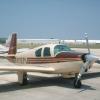Computers and stuff in airplanes
-
Members Online
- Scooter
- N201MKTurbo
- TCC
- midlifeflyer
- Mufflerbearing
- redbaron1982
- Caldwelldr
- exM20K
- Hector
- dzeleski
- eman1200
- SKI
- Rmfriday
- flewmanchu
- wombat
- narval314
- rbmaze
- gdwinc
- varlajo
- Skyland
- Salvo
- mpn218
- Stubby
- Ragsf15e
- MooneyMax
- AMG880
- Marcopolo
- TB bolts
- Nippernaper
- Jakes Simmons
- M20F
- ProtoFly
- Skates97
- ta2too
- 201Mooniac
- Jefffriday


Recommended Posts
Join the conversation
You can post now and register later. If you have an account, sign in now to post with your account.